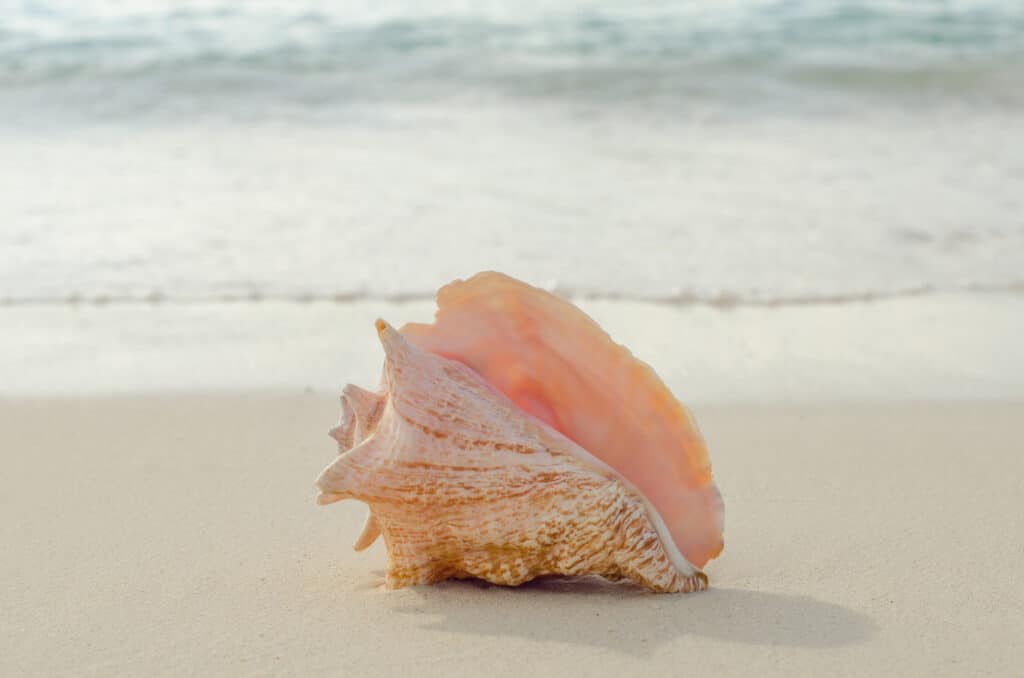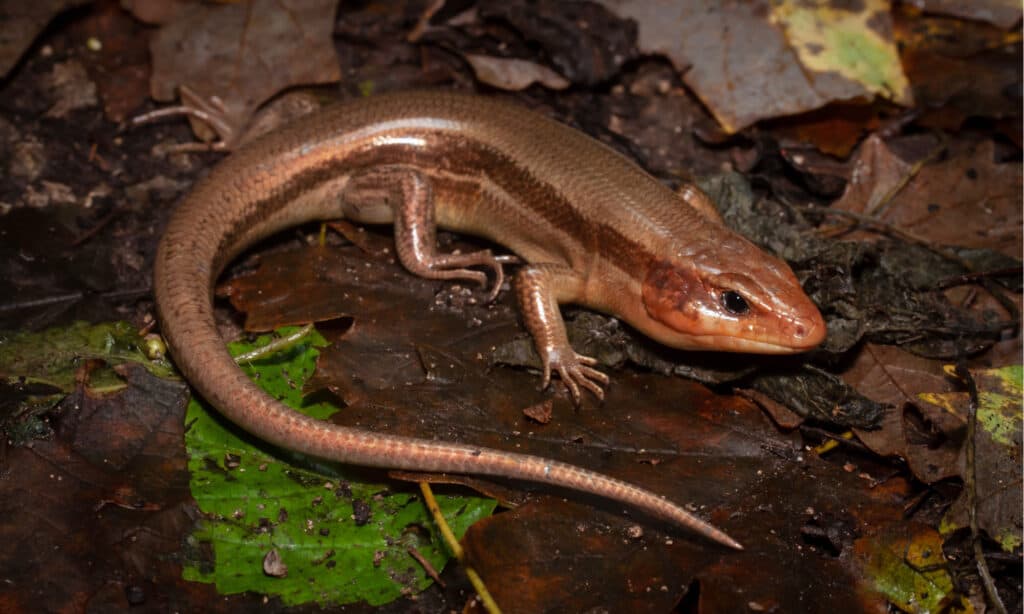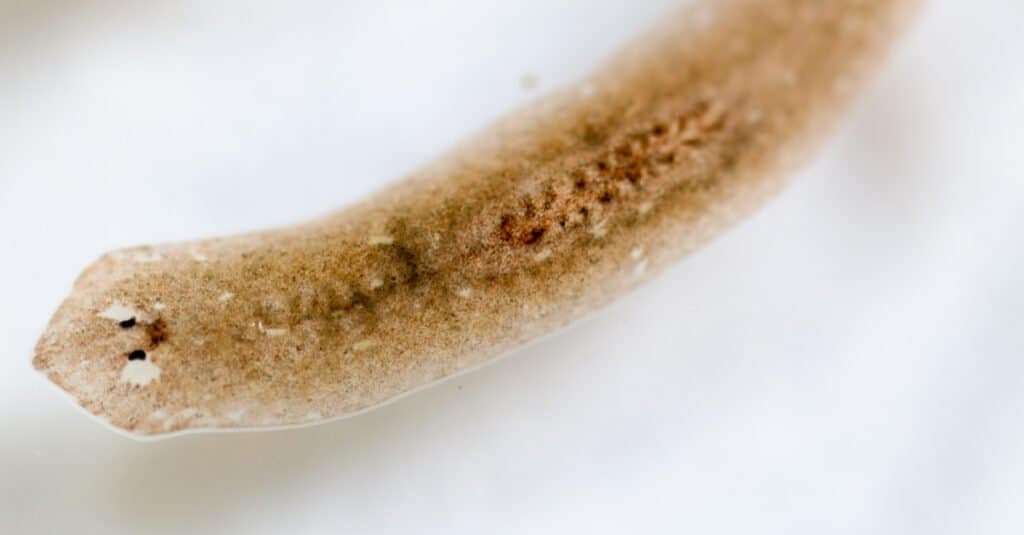Not all animals are fortunate enough to have the ability to regrow body parts. Take kangaroos, for instance. If they lose their tails, they cannot regenerate them and have to learn how to live without their “third leg,” as some scientists call it. Raccoons can lose their limbs and, like kangaroos, cannot regenerate them. These small mammals can only heal cuts and scrapes.
However, some animals do have this possibility! Some of them have such incredible regenerative abilities that they’ve inspired scientists to “teach” the human body how to do this! Keep reading to discover seven unique animals and the body parts they can grow back!
1. Sea Stars

Most sea stars have five arms, although some can have more.
©Vojce/Shutterstock.com
| Sea Stars | |
|---|---|
| Scientific classification | Asteroidea (class) |
| Distribution | The world’s oceans |
| Regenerated organ | Arms |
| Another unique feature | Some starfish species are considered keystone species. |
Starfish are lovely star-shaped echinoderms! They form the Asteroidea class and are divided into almost 2,000 species! These stars cannot survive in freshwater habitats, so they’re found only in oceans, where they live at 20,000-foot depths.
Most sea stars have five arms, although some can have more. Their upper surface can be smooth, spiny, or granular and covered by overlapping plates.
Their beauty resides in their bright colors! Starfish can be red, orange, blue, brown, or gray.
Sea stars are among the only creatures that can regenerate body parts. They can regenerate the arms they lose and even regrow new limbs! Some species have the incredible ability to regrow a complete disc if they have an arm left! However, this is a long process and may take years until the arms are fully regenerated.
2. Conchs

Conchs are found in the Strombidae, Fasciolariidae, Turbinellidae, and Melongenidae families.
©iStock.com/Nina Sidneva
| Conchs | |
|---|---|
| Scientific classification | Mollusca (phylum) |
| Regenerated organ | Eyes |
| Another unique feature | The meat is edible and is used raw or cooked; the shells are used as musical instruments. |
Conchs are medium-sized or large sea snails. They can be distinguished from other sea snails by their shells, which feature a distinctive siphonal canal and a high spider. Conchs are found in the Strombidae, Fasciolariidae, Turbinellidae, and Melongenidae families. Their name comes from the Latin word “concha,” meaning shellfish.
The eyes of these marine gastropods are located at the ends of long stalks. If they lose an eye, they can quickly regenerate it. While other gastropods can regenerate their eyes, too, conchs do this much faster.
3. Deer

Deer are hoofed ruminants that form the
Cervidaefamily.
©Joe McDonald/Shutterstock.com
| Deer | |
|---|---|
| Scientific classification | Cervidae (family) |
| Distribution | All continents except Antarctica |
| Regenerated organ | Antlers |
| Another unique feature | Deer are major symbols in mythology, heraldry, religion, and literature. |
Deer are hoofed ruminants that form the Cervidae family. They are the only mammals that have regenerative abilities.
Male deer have antlers that are shed and fully regenerated. While some species do this annually, others may never shed their antlers. Once the antlers are shed and the wounds are healed, new antlers start growing. Most of the time, they are larger and more branched than the previous sets; you can tell how old the deer is if you study its antlers.
Luckily, scientists believe that antler shedding isn’t painful to deer.
The shed antlers are a major food source for some wild animals, especially during winter when other food sources are scarce.
4. Skinks

Skinks are lizards with small legs belonging to the
Scincidaefamily.
©Mike Wilhelm/Shutterstock.com
| Skinks | |
|---|---|
| Scientific classification | Scincidae (family) |
| Distribution | All over the world. Particularly abundant in Southeast Asia, the Australian desert, and temperate North America. |
| Regenerated organ | Tail |
| Another unique feature | Skinks have green blood |
Skinks are lizards with small legs belonging to the Scincidae family. The world hosts around 1,500 skink species that live in almost any habitat. These lizards have long, tapering tails that serve as a means of escaping predators. Skinks can shed their tails if a predator grabs them. Sometimes the tail keeps moving even after detachment.
Afterward, they can regenerate the lost part, which reaches full size within 3-4 months. However, skinks aren’t always capable of perfectly growing their tails back. Besides, they are more vulnerable during that period.
5. Zebrafish

Zebrafish are popular aquarium fish in South Asia.
©Oregon State University / Creative Commons – License
| Zebrafish | |
|---|---|
| Scientific classification | Danio rerio |
| Distribution | Native to South Asian freshwater habitats but has been introduced to the United States, Malaysia, and Colombia. |
| Regenerated organ | Heart, lateral line hair cells, photoreceptor cells, and retinal neurons; possibly paired and unpaired fins, jaw, and spinal cord |
| Another unique feature | Zebrafish have been associated with episodic memory, which implies conscious experience. |
Zebrafish are popular aquarium fish in South Asia, where they’re commercially called zebra danio. These aquatic creatures can regenerate their hearts – how amazing is this! This zebrafish ability has inspired the British Heart Foundation to study whether this ability can be applied to humans!
Moreover, zebrafish can regenerate their lateral line hair cells, photoreceptor cells, and retinal neurons.
A study shows that, besides what we’ve already mentioned, zebrafish can regenerate the paired and unpaired fins, the spinal cord, and the jaw. No wonder dozens of studies nowadays discuss and highlight zebrafish regenerative abilities!
6. Flatworms

Flatworms are soft-bodied invertebrates with no circulatory or respiratory organs.
©Rattiya Thongdumhyu/Shutterstock.com
| Flatworms | |
|---|---|
| Scientific classification | Platyhelminthes (phylum) |
| Regenerated organ | They can regenerate all kinds of body parts, head included |
| Another unique feature | Flatworms are bilaterally symmetrical animals and have no internal body cavity. |
Flatworms are also called platyhelminths. They are soft-bodied invertebrates with no circulatory or respiratory organs. Flatworms use the stem cells in their bodies to regenerate tissues after asexual reproduction (since they reproduce by tearing their bodies in two) or injury.
Moreover, planarians (a type of flatworm in the Turbellaria group) can regenerate their bodies if divided by cuts. They can even grow their heads back on fragments that were originally closest to the original heads!
7. Crayfish

Crayfish are known for their ability to regenerate their claws.
©Alex Stemmers/Shutterstock.com
| Crayfish | |
|---|---|
| Scientific classification | Astacoidea and Parastacoidea (superfamilies) |
| Distribution | One crayfish family is found in the Southern Hemisphere, and three are found in the Northern Hemisphere. |
| Regenerated organ | Claws |
| Another unique feature | Fossilized crayfish burrows date from the Paleozoic or early Mesozoic |
Crayfish are lobster-like crustaceans living in freshwater. Their bodies consist of 20 body segments and can reach 6.9 inches long. Crayfish are known for their ability to regenerate their claws.
However, the regenerated claws may differ from the ones nature gifted crayfish with. A study focused on the claw regeneration of the Faxonius virilis crayfish, also called the virile crayfish, showed that the pinching forces of the regenerated claws were weaker than those of the original claws. Besides this, the muscle mass was lower than in the original claws.
Other studies show that newly hatched crayfish have more powerful regenerative abilities than adult crayfish.
Up Next:
- 13 Animals That Can Climb Trees
- New Study: Zebrafish Vision Could Cure Color Blindness
- 8 Types of Deer: Learn About All of the Major Deer Species
- Freshwater Animals: 50+ Animals That Call This Biome Their Habitat
The photo featured at the top of this post is © Matt Jeppson/Shutterstock.com
Sources
- National Library of Medicine, Available here: https://www.ncbi.nlm.nih.gov/pmc/articles/PMC2785262/
- Wiley Online Library, Available here: https://onlinelibrary.wiley.com/doi/abs/10.1002/cne.902620407
- Lake Forest College, Available here: https://www.lakeforest.edu/news/restoring-balance-tail-regeneration-in-eublepharis-macularius-and-its-implications-for-spinal-cord-treatment
- PHYS, Available here: https://phys.org/news/2014-07-tale-kangaroo-tail.html
Thank you for reading! Have some feedback for us? Contact the AZ Animals editorial team.






